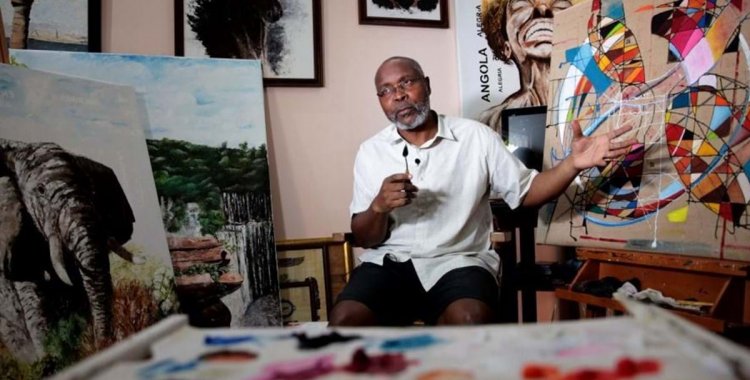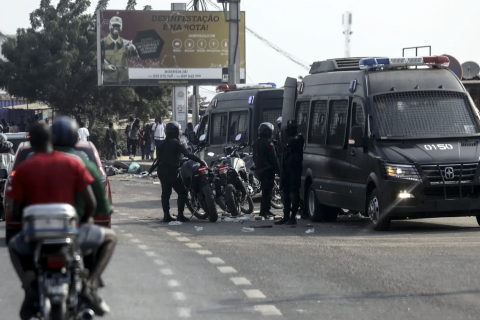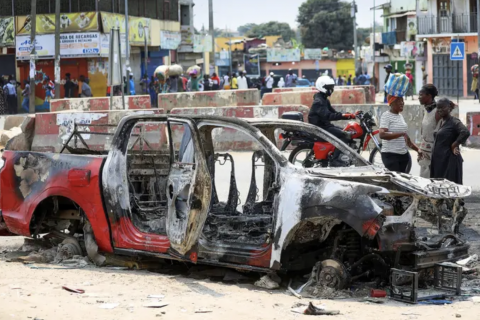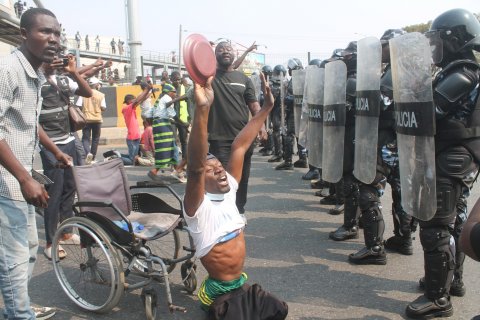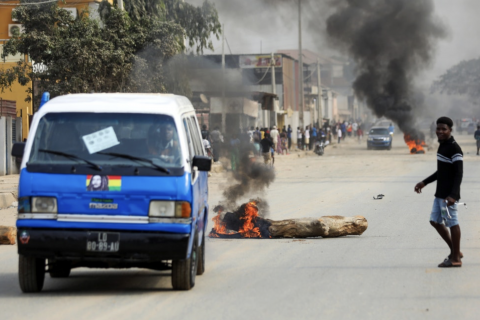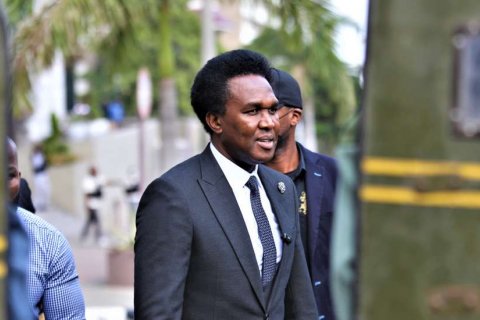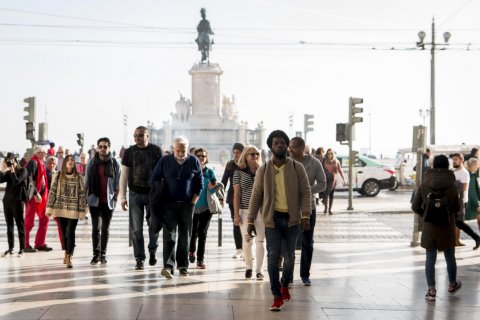It is to them, among other signs, that the Angolan painter Albino da Conceição, sought inspiration to transmit his vision of the pandemic through art.
"I felt the need to register and transmit my point of view, what I felt. I was affected by the pandemic indirectly because the municipality that I manage has, until now, had the biggest sanitary siege in the country", highlighted the artist who is also Cazenga's administrator , a municipality in Luanda where 1.5 million people live in an area of 46 square kilometers.
It was here that a sanitary fence was set up in one of its neighborhoods - in the urban district of Hoji Ya Henda, where the famous "case 31" resides - leaving more than 3700 people isolated for 47 days.
You remember the end of the siege well. "The joy of the children, of all those people touched me very deeply. I felt the joy of living in freedom again and they said:" Long live freedom! And that led me to think about transmitting that message to the screen ", he reminded Lusa.
This is how "26" and "31", two numbers of infected people who were already famous for being the first cases associated with Angola to be infected by local transmission from covid-19, were also immortalized in the art of Albino da Conceição.
The artist thus left his most usual themes, Africa and the Angolan landscapes, for a more abstract work.
"I have essentially dedicated myself to works of the real and then I make my interpretation", told the Lusa the painter who usually chooses Angolan themes to make known a country that has "many corners, people, good things" to discover.
Albino da Conceição paints why he likes it, but also "to convey some message to society", he summarizes, pointing to the screen one of the squares that symbolizes confinement.
But there are other signs: in a corner of the painting, a stylized plane recalls that "the covid expanded around the world by plane and brought the cases to Angola".
There is also a spherical design, which symbolizes the globe, but also the virus, and a black line that spreads throughout the frame "meaning the cases and the respective contacts".
Important actors, doctors and nurses, "the health personnel" are represented by white lines that control the spread of the disease, "a work done with love", describes Albino da Conceição, showing the shape of a heart.
"Love is the way we have to do together to overcome all the obstacles caused by the disease. I liked having done this work, in the end I think I managed to gather the same feeling that came to me when I saw those children and those people in my municipality staying satisfied to be free again ", he stresses.
In this pandemic portrait of Angola "and of the whole world", the painter went to look for the colors of the various international flags, with a predominance of yellow, red, blue and white to express the universality of the virus that appeared in China, which without looking in color, nor countries, spread across the planet contaminating, and killing, millions of people.
The politician, who earned a degree in Sports and held several government positions related to sport, becoming Minister of Youth and Sports, is a self-taught person who likes challenges.
He does not make sketches or drawings and "attacks" the canvas directly, always painting in oil and only with a trowel. "With brushes it would be too easy", stresses Albino da Conceição. "I like the texture that the spatula causes and leaves on the paintings", he says.
He confesses that "since he was a kid" he always liked drawing and color, but over the years dedicated to his political career he forgot about the arts and only in recent years has he returned to paints, encouraging his children, students of Design and Architecture.
He held his first exhibition in 2015 and from then on, "there was no more time to stop".
He also exhibited in 2017, at Galeria Nuno Sarmento, in Aveiro, Portugal, and a year later in São Salvador da Bahia, Brazil, at the invitation of an association.
As for the destination to be given to the last work: "It depends on what society will want".

